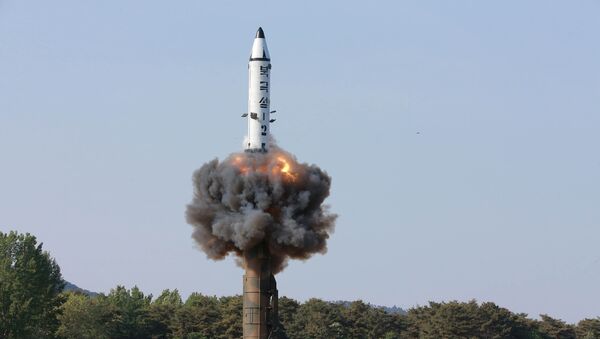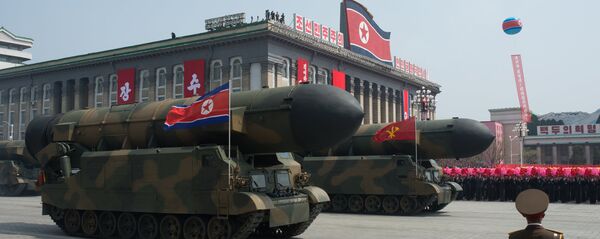Expecting a liquid fuel missile and getting a solid fuel one is a bit like expecting a pen knife and getting a greatsword: solid fuel rockets are faster, more reliable and much harder to intercept. Liquid fuel rockets need to be fueled before they launch, opening a several hour window for a tactical airstrike to take the missile out. Solid fuel has no such limitation. The US uses solid fuel technology for its own arsenal of intercontinental ballistic missiles (ICBMs), the Minuteman.
Aerospace engineer John Schilling, a member of North Korean analysis think tank 38 North, estimated in March 2016 that North Korea would have solid fuel missiles "within five years." After the May 2017 test, Schilling upgraded his estimate to "another year or so."
"If and when this happens, it will give North Korea a robust second-strike capability against targets in South Korea and Japan," wrote Schilling. "This will] give them the ability to retaliate if they are the victims of someone else's first strike, and to credibly threaten retaliation in order to deter an attack in the first place."
Schilling also estimated that North Korea would have a liquid-fueled ICBM capable of hitting the US mainland in 2020 and a solid-fueled one by 2025.
Under Washington's nose, the DPRK built, tested, and perfected a new generation of intermediate missiles. This opens the possibility of North Korea flabbergasting the US once more – this time with a long-range ICBM that threatens American soil. On their current trajectory, this is a question of when, not if.
"If left on its current trajectory the regime will ultimately succeed in fielding a nuclear-armed missile capable of threatening the United States homeland," said Defence Intelligence Agency Director Lieutenant-General Vincent Stewart during a Senate hearing on May 23. "While nearly impossible to predict when this capability will be operational, the North Korean regime is committed and is on a pathway where this capability is inevitable."
"It is a direct threat to the United States," said Defense Secretary James Mattis during a Sunday appearance on CBS' "Face the Nation" regarding the missile tests. "They have been very clear in their rhetoric — we don't have to wait until they have an intercontinental ballistic missile with a nuclear weapon on it to say that now it's manifested completely."
In addition to the Pukguksong-2, the DPRK has recently successfully tested an intermediate-range liquid fueled missile (the Hwasong 12) and a Scud-b tactical ballistic missile, analogous to a Soviet design from the 1960s.




